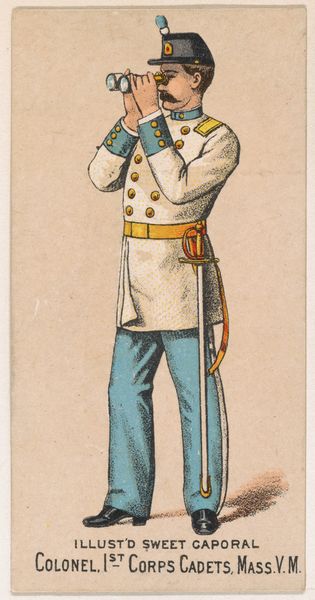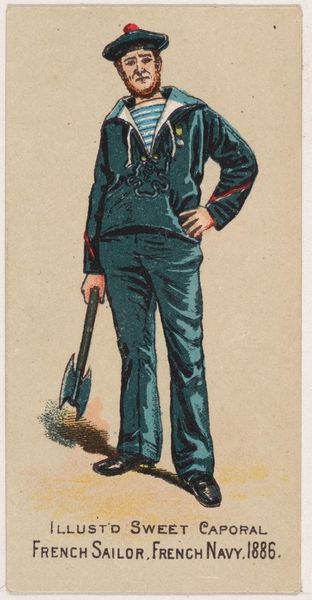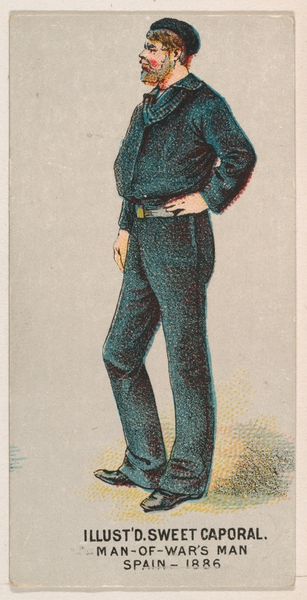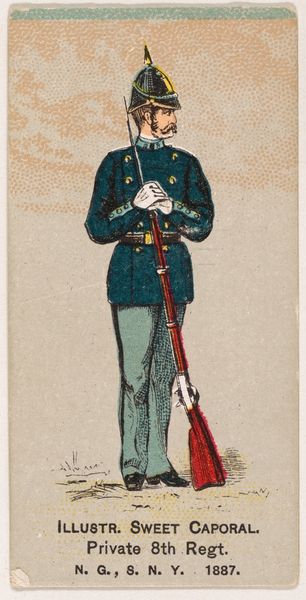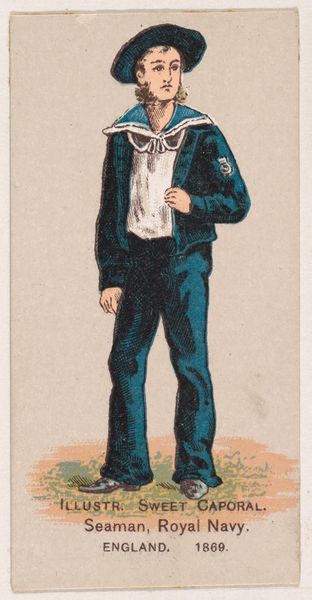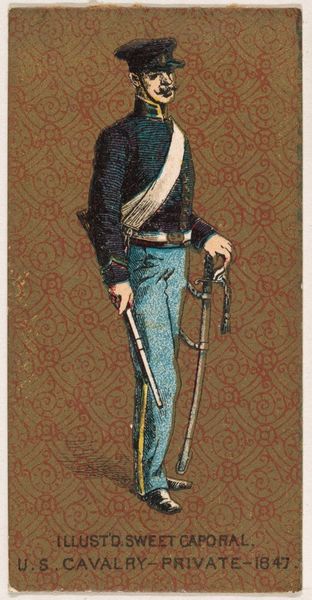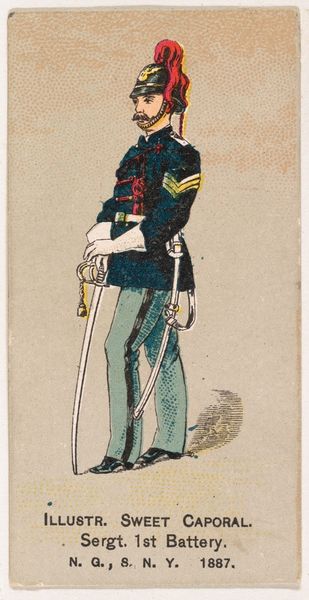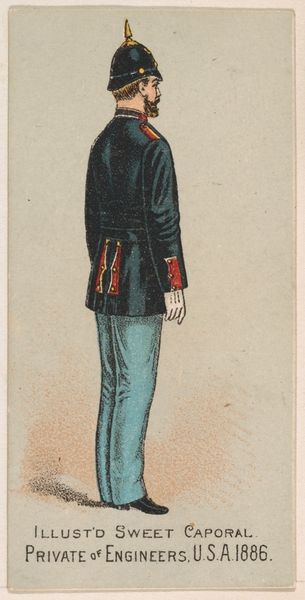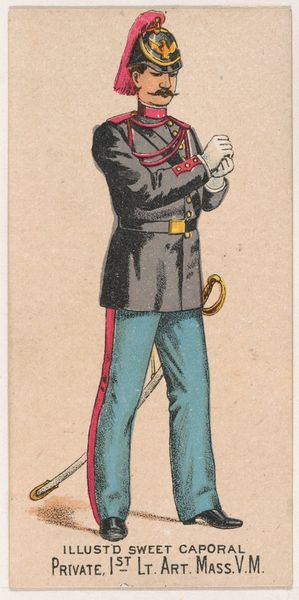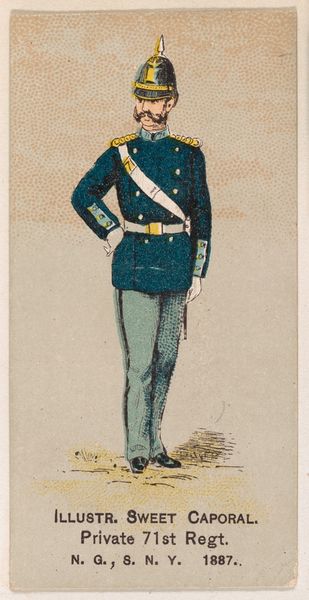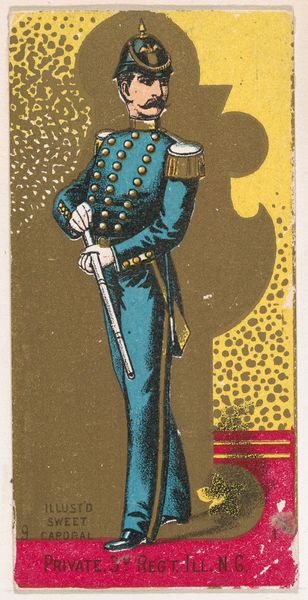
Staff Sergeant, Germany, 1886, from the Military Series (N224) issued by Kinney Tobacco Company to promote Sweet Caporal Cigarettes 1888
0:00
0:00
drawing, print, ink
#
portrait
#
drawing
# print
#
figuration
#
ink
#
men
#
genre-painting
#
cartoon style
#
realism
Dimensions: Sheet: 2 3/4 × 1 1/2 in. (7 × 3.8 cm)
Copyright: Public Domain
Curator: Right, let’s have a closer look at this little treasure. We’re looking at "Staff Sergeant, Germany, 1886" from the Military Series, originally a promotional card for Sweet Caporal Cigarettes, brought to us by the Kinney Tobacco Company around 1888. Editor: My first thought? Remarkably stiff. It feels more like a fashion plate than a real soldier. All posture, and those crisp, meticulous lines! A study in military decorum. Curator: Precisely! Think about it: this was designed as a collectible, an incentive. Cigarettes were about indulgence and these cards traded on that, offering a glimpse into… exotic lands and figures, like this German Staff Sergeant. But it's an idealized vision, isn't it? The realism almost mocks itself. Editor: Idealized, and distinctly masculine, of course. Military regalia have always been entwined with displays of power and gender, specifically to inspire admiration—even sexual attraction—for masculine ideals rooted in strength and violence. Curator: Good point! It's quite the spectacle, this uniform. The feathered helmet, the immaculate coat… It all speaks to a certain rigid societal structure. What do you make of the colors? Editor: Stark. The muted green, the precise red trim—almost antiseptic. Like the precision of the military machine itself. It’s not trying to be inviting, is it? Which speaks volumes about the image’s intended purpose: instilling respect for power. Curator: True. And power manifested through these genre paintings. They are more interested in uniform and the symbolism surrounding them rather than portraiture or true "genre". What about his sword, mostly hidden behind his figure? A symbol of a certain code, of "gentlemanly" warfare? Editor: Without question. Note that this was produced decades after German unification, amidst growing military might. An artifact of nationalist sentiment, if you ask me. Kinney Tobacco was contributing to and capitalizing on a cultural moment. Curator: Yes, and perhaps unintentionally reminding us how those beautiful, stiff, erect bodies become those mangled in future wars... Such an image is quite the paradox when thinking of Europe just a few decades later... I still love that helmet feather though. Editor: A potent little snapshot. Much more loaded than it first appears, I think. Makes you want to look again, doesn't it?
Comments
No comments
Be the first to comment and join the conversation on the ultimate creative platform.
